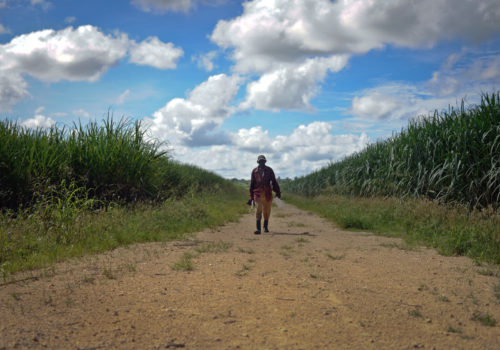Born 1976 in Eastern Germany and witnessing the fall of the system in front of his eyes led. Marco to engage in
documenting the social contrasts in our world. This facination has led him to travel to over 54 countries in his
lifetime whilst photographing the past 15 years of these experiences.
His professional career started out after his 20 month solo Mountain bike journey from Europe to Africa to Asia,
documenting urban, rural and nomadic lifestyles in an attempt to capture the everyday lives of a plethora of cultures.
He uses a Nikon D300, Nikon D3x with Lens 24mm 2,8, 35mm 2,0, 50mm 1,2, 85 mm 1,8, 24 – 70mm 2,8.
In recent light Marco is more concerned with life conditions through pictorial stories of
his reports. Having recently returned from Haiti, documenting the failing work of the UN ,
various NGO’s and local governments after recieving 10 billion in aid for the disastrous
earthquake in Haiti.
His is currently working with the DPA, Picture Alliance, Getty Images a.s.o.
INTRO Slaves in Paradise
Hispaniola is the second largest island of the Antilles in the Caribbean nations comprised of Haiti (western part) and the
Dominican Republic (eastern part). Serious riots led to the Declaration of Independence of 1801 and the abolition of slavery
was realized on the island. Since 2001, over three million Haitians have fled or emigrated leading to over 800,000 illegal Haitian
immigrants mostly to the Dominican Republic.
Infront of the lens …
The history of the Haitian people is a drama full of sorrow and horror. Since the navigator Christopher Columbus set foot in 1492,
the island of Hispaniola, The people of Haiti had endured centuries of exploitation, bloody uprisings and despotism. As if these are
not enough, the geographical location also makes for bad disasters: tropical cyclones and severe earthquakes also have taken their
toll.
Only after a few decades after the landing of the Spanish colonialists, the indigenous natives were affected by newly introduced diseases,
forced labor, and oppression, leaving most of the indigenous population almost completely eradicated. The gold mines, and cultivation of the
more profitable sugar cane plantations, were therefore the root for the Spanish colonialists to begin the horrid slave occupation of Hispaniola
in the16th Century. Large numbers of African slaves shipped to the Caribbean ended up here. The descendants of the forcibly displaced African
slave offspring now make up almost 90 percentof the Haitian population.
The economy of the island also has Long-term debt payment obligations amalgamated from independence, mismanagement, corruption, unstable
political conditions and natural disasters. Turning it from a once very rich country, to the poorest country in the Western Hemisphere. The descendants
of these slave laborers rush to flee the terrible conditions: In the last ten years over three million Haitians have emigrated from Haiti. Most of
them taking the path across the border into the neighboring country, the Dominican Republic, where more than 800,000 people currently live
predominantly illegally from Haiti.
These conditions are responsible for one of the worst manifestations of the 21 Century: A type of modern slavery… The Sugar cane
plantation operators in the Dominican Republic use the plight of these destitute migrants from Haiti, to make them toil in their sugar
cane plantations for starvation wages. For under two dollars a day the illegal Haitians are working 12-14 hour days in the fields. I
n the scorching sun, hard tropical rain and worst of all, frequent injuries included from using a machete. From their long hard hours of work a
pitiful monthly wage leaves nothing left to save: Their accommodation is in the impoverished ‘bateyes’ (camps).
Comprised of makeshift barrack type housing built on the edge of fields without access to electricity and water. The plantation owners
that collect rent on these are asking for astronomical sums.The illegal and defenseless enslaved workers are forced to face a future without
prospects and work hard for just a miserable existence. Cut off from society, without access to education and health, and often separated
from their families. Any family member who wishes to contact them in the ’bateyes’ should contact local their voodoo priest in the ’bateyes’.
Although 90 percent of Haitians are committed to the Catholic faith, they cling to the hope that the magic of voodoo can
alleviate their fate.
A drama of our time: The descendants of former African slaves who freed themselves proudly only to face two hundred years of oppression,
corruption and natural disasters, are now trapped in modern slavery again.
















